Colloquia for Fall 2013
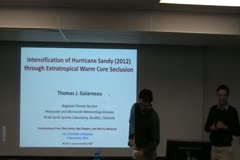
Intensification of Hurricane Sandy (2012) through Extratropical Warm Core Seclusion
December 06, 2013
Tom Galarneau
Hosted by Russ Schumacher
Hurricane Sandy's landfall along the New Jersey shoreline at 23:30 UTC 29 October 2012 produced a catastrophic storm surge stretching from New Jersey to Rhode Island that contributed to damage in excess of $50 billion the sixth costliest U.S. tropical cyclone on record since 1900 and directly caused 72 fatalities. Hurricane Sandy's life cycle was marked by two upper-level trough interactions…
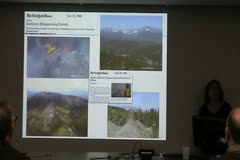
Imagining the future of Colorado's forests: beetles, wildfire, and people
November 22, 2013
Monique Rocca
Hosted by Dave Randall and Scott Denning
Bark beetles and wildfires are natural components of Rocky Mountain forested landscapes. The increased incidence of drought in the coming decades will both make trees more susceptible to insect infestations and extend the length and severity of the fire season. I will describe how Colorado Front Range landscapes have changed following recent outbreaks and fires, and speculate on what we might…
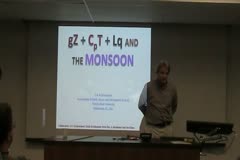
gZ+CpT+Lq and the MONSOON
November 20, 2013
T.N. Krishnamurti
Hosted by Mark DeMaria and Prof. Gray
Following Riehl and Malkus's pioneering work on the Heat budgets of the Equatorial trough, Riehl's studies on heat budget of the Bahama Circle and his work on Hurricane Daisy of 1958 this work examines a major role for the recent enhanced heat content of the monsoon. Another relevant important study is that of Abraham Oort, of GFDL Princeton, who addressed questions on Extra-Monsoon, meaning…
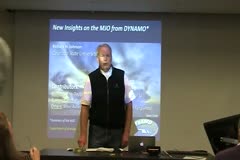
New Insights on the MJO from DYNAMO
November 18, 2013
Richard Johnson
Hosted by Russ Schumacher
The Madden-Julian Oscillation (MJO) has profound impacts on weather and climate worldwide, yet the basic dynamics of this oscillation are still not well understood. In addition, many forecast models have a difficult time predicting the MJO. An international field campaign – Dynamics of the MJO (DYNAMO) – was carried out in the Indian Ocean in 2011-12 to investigate MJO initiation with…
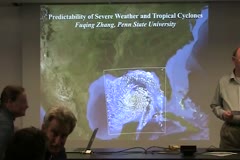
Predictability and data assimilation of severe weather and tropical cyclones
November 08, 2013
Fuqing Zhang
Hosted by Dick Johnson
Despite rapid advances in numerical weather prediction (NWP) models and ever increasing computational capability, our ability to accurately predict various severe weather phenomena in the short range and at the mesoscales remains limited. This talk will present an overview of recent progress in our understanding of the mesoscale predictability of various severe weather phenomena including…
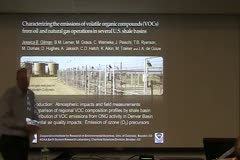
Characterizing the Emissions of Volatile Organic Compounds (VOCs) From Oil and Natural Gas Operations in Several U.S. Shale Basins
November 01, 2013
Jessica B. Gilman
Hosted by Arsineh Hecobian
Important Note: ALL Seminar attendees agree not to cite, quote, copy, or distribute material presented without the explicit written consent of the seminar presenter. Any opinions expressed in this seminar are those of the speaker alone and do not necessarily reflect the opinions of NOAA or ESRL CSD. The production of oil and natural gas from unconventional reservoirs is…
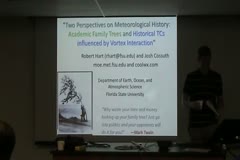
Two perspectives on meteorological history: Academic family trees and Fujiwhara-enhanced U.S. TC landfall
October 25, 2013
Robert Hart
Hosted by FORTCAST
As part of the American Meteorological Society's 30th Conference on Hurricanes and Tropical Meteorology in Ponte Vedra Beach, Florida, in April 2012, an academic lineage ("family tree") of that community was presented to document the history of contributors to the field on the anniversary. For every self-identified or colleague-identified tropical meteorology scientist, the year of the person's…
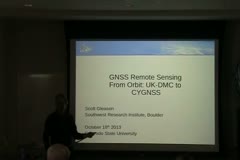
GNSS Remote Sensing From Orbit: UK-DMC To CYGNSS
October 18, 2013
Dr. Scott Gleason, Southwest Research Institute
Hosted by Eric Maloney
This presentation will give an overview of space based GNSS reflectometry from the first signals received on orbit to preparations for the CYGNSS constellation, scheduled for launch in 2016. The history of the technology from satellite platforms will be presented, including a summary of the results obtained from the GNSS reflections experiment on the UK-DMC satellite. Signals received from…
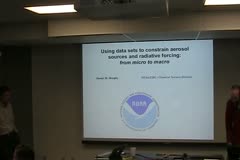
Using data sets to constrain aerosol sources and radiative forcing: from micro to macro
October 18, 2013
Daniel Murphy
Hosted by Jeff Pierce
Aerosol radiative forcing is the difference between the radiative effect of aerosols now and during pre-industrial times. Calculating that difference requires understanding the sources of the particles. I will present how data sets as diverse as single particle analysis, the IMPROVE ground-based network, and satellite data can be used to constrain the sources and radiative forcing of aerosols.…
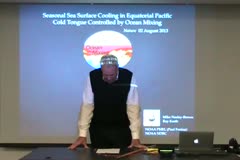
Why does SST in the equatorial Pacific cold tongue exhibit a seasonal cycle when the atmosphere heats the ocean year round?
October 11, 2013
Jim Moum
Hosted by Steve Rutledge and Elizabeth Thompson
Sea surface temperature (SST) is a critical control on the atmosphere, and numerical models of atmosphere-ocean circulation emphasize its accurate prediction. Yet many models demonstrate large, systematic biases in simulated SST in the equatorial "cold tongues" (expansive regions of net heat uptake from the atmosphere) of the Atlantic and Pacific oceans, particularly with regard to a central…
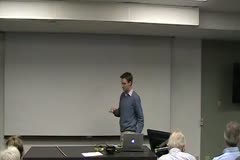
An early look at the historic September 2013 heavy rainfall and flooding in Northern Colorado
September 27, 2013
Members of the CSU/ATS and CIRA community
Hosted by Russ Schumacher
From 9-16 September 2013, extremely heavy rain fell over a large portion of northern Colorado, and especially in Boulder and Larimer Counties. This resulted in deadly and destructive flash flooding in many creeks and rivers in the foothills and mountains, and record flooding of the South Platte River on the Plains. The colloquium will offer an early look at some of the observations,…
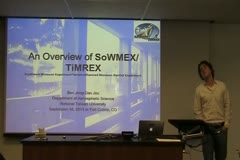
An Overview of SoWMEX/TiMREX
September 17, 2013
Prof. Ben Jong-Dao Jou
Hosted by James Ruppert
Interaction of southwesterly wind surges over South China Sea and the steep terrain of Taiwan during the Meiyu (May and June) period of the East Asian summer monsoon often produce severe heavy rainfall and flash floods. The Southwest Monsoon Experiment (SoWMEX) / Terrain-influenced Monsoon Rainfall Experiment (TiMREX) is a cooperative field observational programs conducted jointly by the…

My Personal Journey of Aerosol-Cloud-Precipitation Interactions
September 06, 2013
Toshihisa Matsui
Hosted by Sonia Kleidenweis
This seminar will provide a discussion in the aerosol-cloud-precipitation interactions through reviewing my past and current works using satellite observations and high-resolution modeling. Topics will cover from an aerosol-marine low clouds interaction to an aerosol-deep convection clouds interaction by comparing the observational and modeling studies, and also discuss the issues in these…
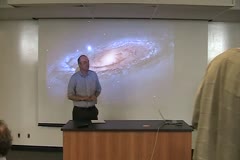
A tale of two chemicals: N2O and HFCs and their potential inclusion in the Montreal Protocol
August 08, 2013
A.R. Ravishankara
Hosted by Jeff Collett
A.R. Ravishankara Chemical Sciences Division Earth System Research Laboratory NOAA, Boulder, CO The role of nitrous oxide in the depletion of the ozone layer is well documented. Its efficiency changes in a changing climate and continued changes in the atmospheric composition. Nitrous oxide is also a potent greenhouse gas. Hydrofluorocarbons, HFCs, do not deplete the ozone layer, but…
